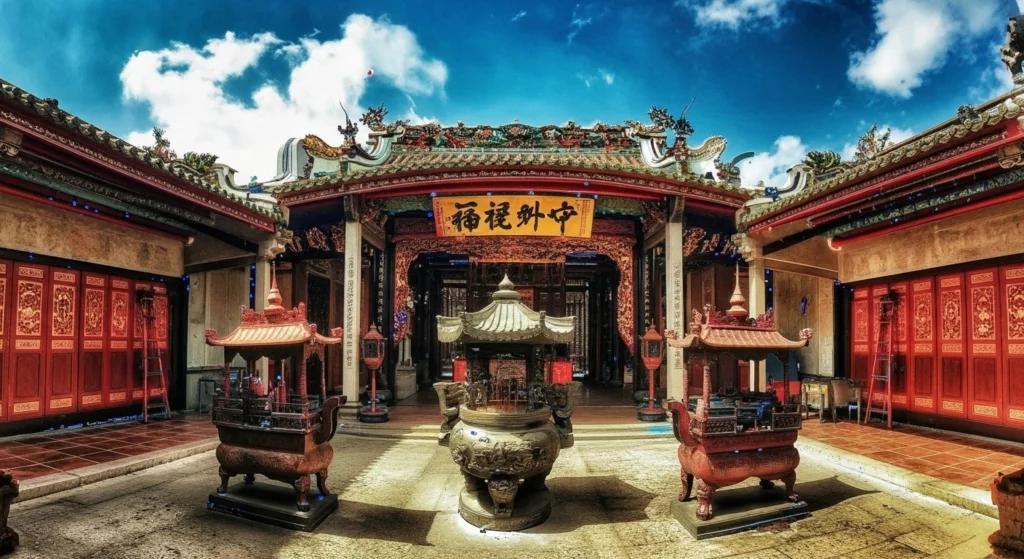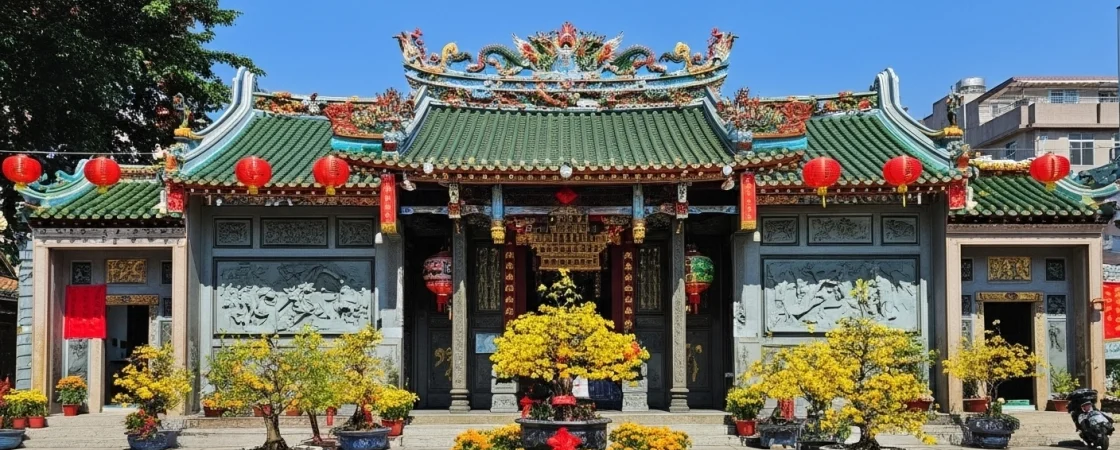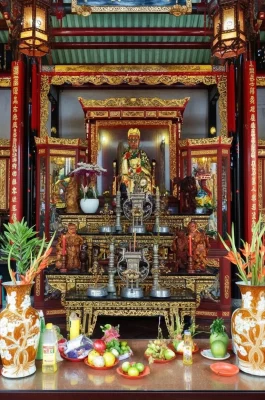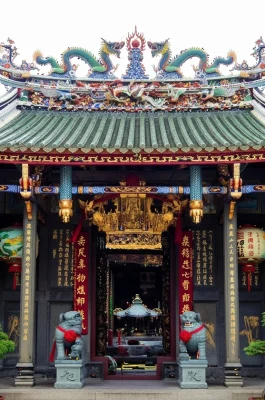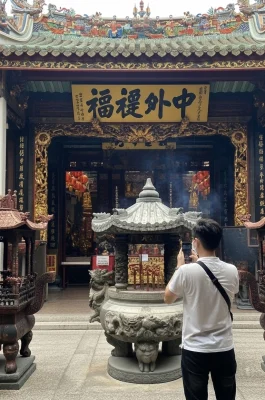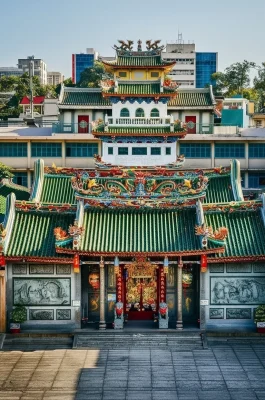A Treasury of Teochew Art and History
Nghia An Assembly Hall, or Chùa Ông (Ong Pagoda), is more than a place of worship; it’s the cultural heart of the Teochew (Triều Châu) Chinese community who migrated from the Nghia An prefecture of Guangdong, China, in the early 19th century. Built in the traditional Chinese “Quốc” (enclosure) layout, the hall is a mesmerizing, multi-chambered showcase of traditional Chinese craftsmanship and artistic expression that has survived for over two centuries.
Exquisite Roof Decor: Before you even step inside, look up. The roof is a masterpiece of intricate glazed ceramic tiles, featuring miniature scenes, mythological figures, and the classic “two dragons chasing a pearl” motif, all shimmering against the Ho Chi Minh City sky.
The Crimson Horse of Loyalty: Inside the front hall, you will be greeted by the colossal, towering statue of the Red Hare Horse (Xích Thố Mã), the legendary mount of the main deity, Lord Guan (Quan Công). The horse is often flanked by its groom, and the ritual of crawling under the horse’s belly (seven times for men, nine for women) is performed during the main festival to pray for good fortune and health—a unique cultural experience.
A Sanctuary of Lord Guan: The main hall is dominated by a majestic, three-meter-tall statue of Lord Guan Yu (Quan Thánh Đế Quân), the deified general symbolizing loyalty, righteousness, and courage, an essential figure in the Chinese pantheon. The sheer size and ornateness of his altar and the surrounding gold-and-red décor create a powerful atmosphere of devotion.
Antique Art Collection: The entire interior is a museum of precious Chinese artifacts. Look for the hanging, coiled incense spirals, which can burn for weeks, filling the hall with a mesmerizing fragrance and creating dramatic shadows. The wooden columns, antique altars, and stone carvings from the late 19th and early 20th centuries are highly valuable, depicting not only legendary tales from the Three Kingdoms era but also scenes of daily life.
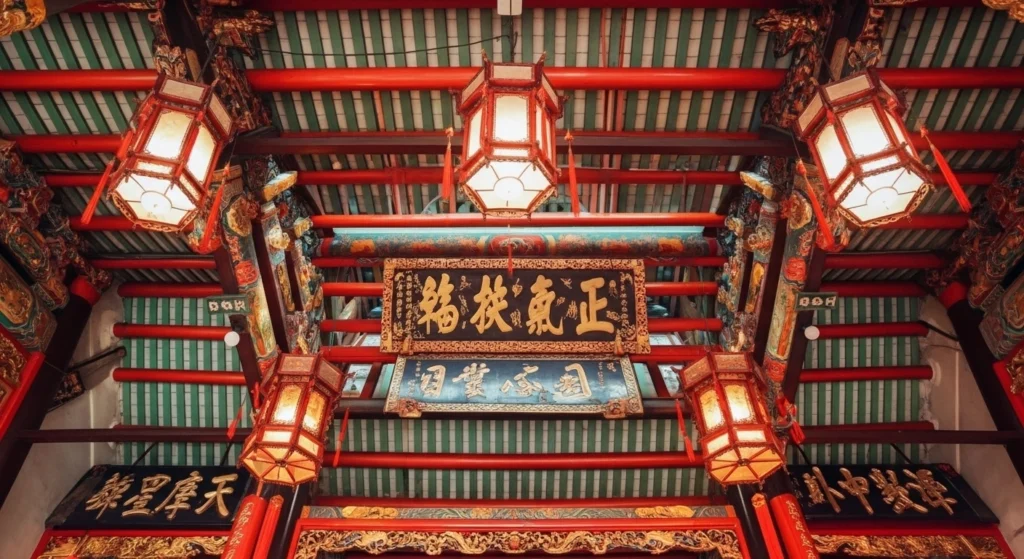
| Practical Information | Details |
|---|---|
| Address | 678 Nguyễn Trãi Street, Ward 11, District 5, Ho Chi Minh City |
| Alternative Name | Chùa Ông (Ong Pagoda) or Temple of Lord Guan |
| Opening Hours | Generally daily from 6:00 AM to 5:00 PM (Hours are subject to change, especially during holidays). |
| Entrance Fee | Free of Charge (Donations are appreciated for maintenance) |
| Best Time to Visit | The 14th day of the 1st Lunar Month for the vibrant Nguyên Tiêu Festival, though quieter mornings offer the best chance to appreciate the intricate details. |
